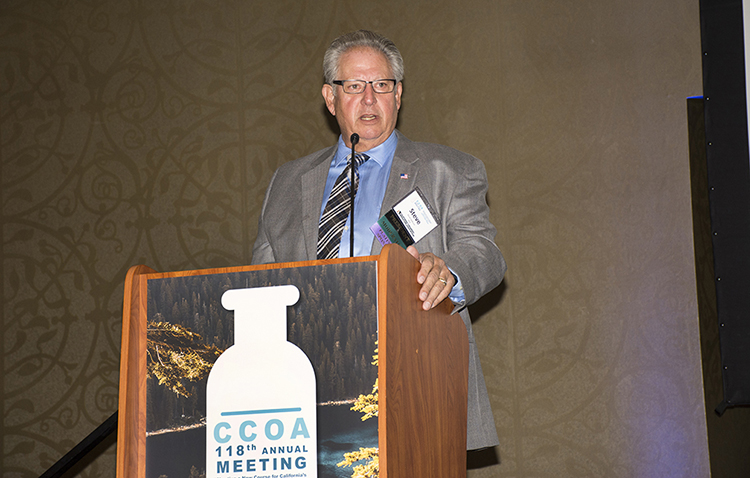
These are changing and challenging times for the nation’s largest milk-producing state. All of California’s major dairy industry measurements are declining and point to a future that is filled with uncertainty.
Through 2016, statewide dairy farm numbers had dropped 27.5 percent in nine years, total cow numbers were down 66,000 head in eight years, and total milk production had fallen two years in a row. Things have not improved in 2017. Through May, USDA data show both cows and total milk are still dropping.
Fewer cows and less milk today – never mind concerns about water availability, labor supply, a growing population, and more environmental regulations tomorrow – are huge reasons why California dairy processors wonder what the future holds for both farmers and for them.
That uncertainty translated into the entire program at last week’s 118th annual meeting of the California Creamery Operators Association (CCOA) in Lake Tahoe, Nev. The meeting “Charting a New Course for California’s Dairy Industry – Where is it Headed?” looked at dairy product demand and supply trends, mounting groundwater issues for farmers, cows’ role in climate change, and the potential impact of a Federal Milk Marketing Order in the state.
CCOA President Steve DeBrum (pictured above) pointed out that population growth, both globally and locally, will figure greatly into those challenges. More people will certainly continue coming to California, and as they do it raises the question, will there still be room left for farmers?
There is no question, however, that they will all want to eat.
“By 2050, there will be more than 9 billion people on the planet (the current United Nations’ estimate is 7.5 billion) and there will probably be more than 60 million people in California (the 2016 estimate by the U.S. Census Bureau was 39.3 million),” he said.
“We have a responsibility to ensure that we’re going to provide the food and fiber they need. Today’s agriculture is a growing, changing, and dynamic industry, and it is one that certainly is going to supply the food and fiber for people in the future,” he noted
DeBrum pointed out that despite the recent declines, California continues to be the nation’s largest dairy state by a wide margin, producing 19 percent of all the milk in the U.S.
“We’ve come a long way, but we have a long way to go,” he added. “It’s all about preparation and getting this to where we really need to be over the next 25 to 30 years. And as we continue to move forward, it’s something that is going to be very exciting.”







